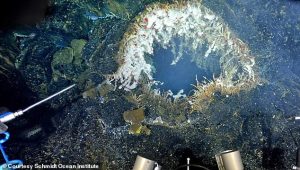Key Takeaways
- Two significant earthquakes (4.8 and 5.4 magnitude) struck near the Axial Seamount underwater volcano
- Scientists predict the volcano could erupt anytime before 2026
- No tsunami threat or coastal impact expected from the eruption
- Research aims to improve prediction for dangerous nearby volcanoes like Mount Rainier
Two major earthquakes have hit just miles from the Axial Seamount, an underwater volcano off Oregon’s coast that scientists warn could erupt at any moment. The 4.8 and 5.4 magnitude quakes occurred Wednesday morning within 100 miles of the volcano’s summit.
Earthquake Activity and Volcanic Warning
The US Geological Survey detected the first quake at 9:42 AM ET, located 25 miles from the caldera of the Pacific Northwest’s most active volcano. A larger 5.4 magnitude tremor followed 18 minutes later, closer to the Oregon coast. While no tsunami warnings were issued and coastal residents won’t feel shaking, researchers confirm significant seismic activity typically precedes the volcano’s eruption.

Scientists Predict Imminent Eruption
Oregon State University geophysicist William Chadwick expects the seamount to erupt “by the end of the year.” In a recent blog post, Chadwick and colleague Scott Nooner revealed: “We had a spike of over 2,000 earthquakes in one day back in June. We don’t really know what it will take to trigger the next eruption and exactly when that will happen.”

University of Washington professor William Wilcock added: “I would say it was going to erupt sometime later this year or early 2026, but it could be tomorrow, because it’s completely unpredictable.”
Previous Eruption Patterns
The Axial Seamount last erupted in 2015, triggering approximately 8,000 earthquakes and producing 400-foot-thick lava flows that caused the ocean floor to sink nearly eight feet. Scientists noticed similar swelling patterns in November 2024 that preceded the 2015 event, suggesting another eruption is imminent.

No Threat to Coastal Communities
Experts confirm the upcoming eruption poses no danger to West Coast residents. Located 300 miles offshore and 4,900 feet below the surface, the volcano is too deep and distant to affect land-based seismic activity or be noticeable from shore.

Connection to Mount Rainier Threat
Scientists are monitoring Axial Seamount to improve eruption prediction for dangerous nearby volcanoes. Mount Rainier, located just 240 miles away, represents a genuine threat to the Pacific Northwest. Experts warn it’s only a matter of time before Mount Rainier unleashes a devastating eruption on the region.
The Axial Seamount forms part of the Pacific Ring of Fire, the 25,000-mile zone of intense seismic and volcanic activity encircling the Pacific Ocean.








